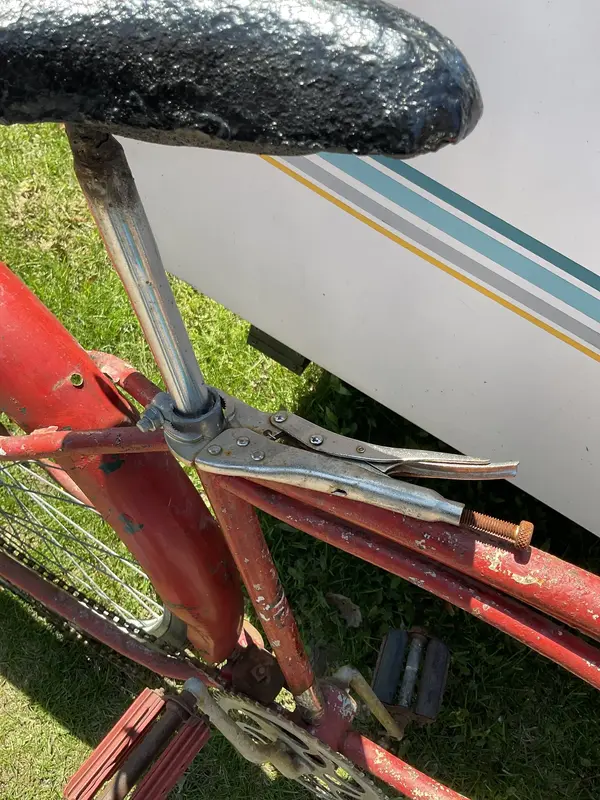Wandering_Lark
Dirt Disciple
Hi - I have what I understand to be a British made Proteus frame (photo below - maybe I'll post properly about the frame separately as I'd love to know more about it.) and I'd love some help around the seatpost diameter.
TLDR: It came with 27.2 which was hell to remove or put back greased
bought 27.0 also hard to put in thuough in an uneven way.
will I break my frame if the 27.0 is actually too small and its just that the lug is warped/ deformed?
More detail:
right now I have an issue with the seatpost. I needed to adust it and it was extremely hard - but not impossible - to move. I finally got it out (by bracing a foot against the bottom of the triangle and corkscrewing for about 20 minutes). No aparent corrosion. the post was a modern alloy 27.2 that I assume the previous owner had put in.
I greased this up and tried putting it back - fet like hell so I stopped and tried with another post I have that's the same size - also hell.
also tried gently prying the slit open a bit - no help.
I wondered about a warped lug?? (saw that on a forum)
Anyway I ordered a 27.0 post
This is hard to push in at the top and then fairly smooth for about 150mm and then seems to hit somethingthing jaggy inside the tube that makes it very hard to move (and scratches the post? or maybe thats a jaggy bit where the seat and toptubes meet - also the jaws of the clamp slit scratch the hell out of posts)
I would just force the 27.0 in and call it a day BUT I'm worried that if this IS too small will the 0.2mm play cause damage to the frame over time? (I'm a faily llight rider about 75kg incase that factors in)
I guess I'm asking what are the possible causes of all this awful and will I break the frame using a 27.0 if its really 27.2 but the lug at the clamp is defrmed or some other pokery.
Thank you

TLDR: It came with 27.2 which was hell to remove or put back greased
bought 27.0 also hard to put in thuough in an uneven way.
will I break my frame if the 27.0 is actually too small and its just that the lug is warped/ deformed?
More detail:
right now I have an issue with the seatpost. I needed to adust it and it was extremely hard - but not impossible - to move. I finally got it out (by bracing a foot against the bottom of the triangle and corkscrewing for about 20 minutes). No aparent corrosion. the post was a modern alloy 27.2 that I assume the previous owner had put in.
I greased this up and tried putting it back - fet like hell so I stopped and tried with another post I have that's the same size - also hell.
also tried gently prying the slit open a bit - no help.
I wondered about a warped lug?? (saw that on a forum)
Anyway I ordered a 27.0 post
This is hard to push in at the top and then fairly smooth for about 150mm and then seems to hit somethingthing jaggy inside the tube that makes it very hard to move (and scratches the post? or maybe thats a jaggy bit where the seat and toptubes meet - also the jaws of the clamp slit scratch the hell out of posts)
I would just force the 27.0 in and call it a day BUT I'm worried that if this IS too small will the 0.2mm play cause damage to the frame over time? (I'm a faily llight rider about 75kg incase that factors in)
I guess I'm asking what are the possible causes of all this awful and will I break the frame using a 27.0 if its really 27.2 but the lug at the clamp is defrmed or some other pokery.
Thank you

